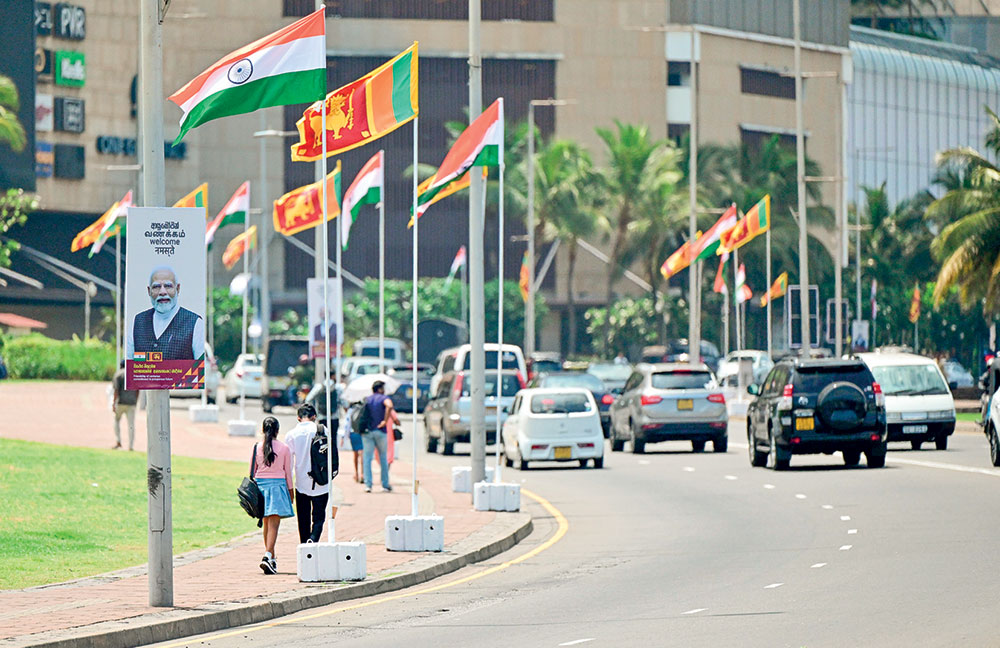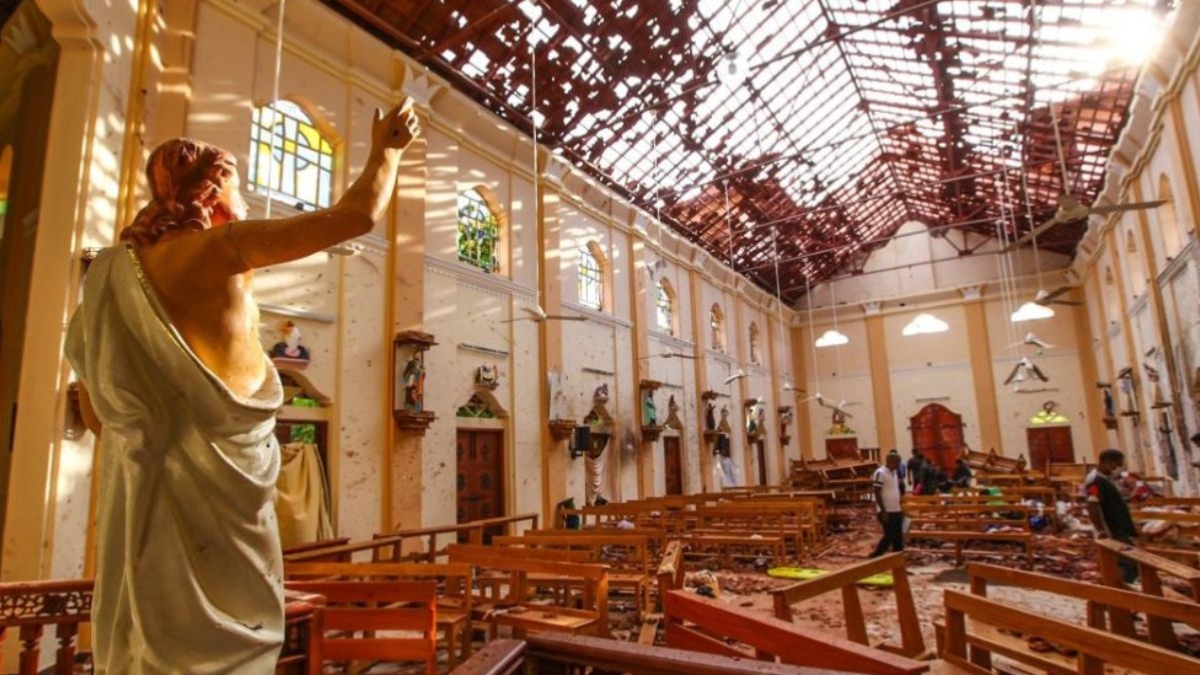Prime Minister Modi is visiting Sri Lanka this weekend, from Friday, April 4th to Sunday, April 6th. This is Modi’s third official visit as Prime Minister, and the first since Anura Kumara Dissanayake became President and led the NPP to form a new government with a massive electoral victory. The official welcoming ceremony will be at the Independence Square on Saturday April 5th, 54 years to the day after the April 1971 insurrection launched by the JVP, the political progenitor of the present Sri Lankan government.
Whether the historical irony of the occasion, if not the underlying coincidence, will be mentioned or memorialized at the official ceremony is unknown at the time of writing to meet the printer’s Friday evening deadline. Anura Kumara Dissanayake was five years old in 1971 and, if my memory serves me well, Vasudeva Nanyakkara and Mahinda Rajapaksa might be the only living politicians from the 1971 parliament. They were both elected to parliament as young first time MPs in 1970.

And quite by coincidence, there will be another wholly nostalgic gathering tomorrow in Colombo to remember Kumar David as comrade, professor and friend. In the 1970s, Vasudeva Nanayakkara, Wickramabahu Karunaratne and Kumar David were young LSSP Turks who were critical of both the JVP and the United Front Government of the SLFP, the LSSP and the Communist Party. Vasudeva Nanayakkara has the singular distinction of being perhaps the only parliamentarian to be detained by the government both in 1971, in the wake of the first JVP insurrection, and after 1983 that ultimately precipitated the JVP’s second coming.
In the now long historical perspective, the JVP campaigned for the United Front parties in the 1970 election and then took guns against them in 1971. The government’s ruthless put-down of the JVP in 1971 created a new template for state repression in Sri Lanka. And to round off the political circle, the 1971 repression helped the UNP to return to power in 1977, free the JVP leaders from jail, and then have its own violent tryst with the JVP in 1988/89.
So, history repeated itself, but, pace Marx, both times as fake and both times as tragedy. The LTTE added a third dimension to this otherwise two dimensional encounters, and by the time it was finished off in 2009, the JVP was emerging as parliamentary political force that at one time another formed governing alliances with the two SLFPs (first in its Horagolla version under Chandrika Kumaratunga and later in its Hambantota version under Mahinda Rajapaksa), as well as the UNP during its atrophying phase under Ranil Wickremesinghe. The Old Left itself, rather what was left of it, divided along the same three ways, and a cluster of them warmed up to JVP’s possibilities under Anura Kumara Dissanayake and his NPP umbrella.
Kumar David himself became a prominent testifier for the new JVP/NPP possibilities using his weekly columns in the Sunday Island and the Colombo Telegraph to good effect. Indeed, in the last article he wrote before his passing, Kumar David congratulated Anura Kumara Dissanayake for his magnificent political achievement and expressed cautious optimism for the prospects under an NPP government. Nostalgia aside, the serious political point here is that it would be a fool’s errand to trace the present JVP/NPP’s political lineage to the embryos of the 1971 or 1988/89 JVP.
There is no unmutated political lineage in Sri Lanka. The political circumstances are also wholly different. The political reality over the last several decades has seen multiple scrambling of many eggs, including rotten eggs, to produce different governing omelettes at different times.
The one that is obtaining now is a better product than most and one that is without the rotten eggs of the past. So, while there is historical irony in the NPP government’s April 5th official welcome to Prime Minister Modi, it would be incorrect and unproductive to read too much into it. Trump’s Mad Old World Far more than domestic realities, there is literally a world of difference in world politics between now and the 1970s.
Donald Trump has seen to it this week with his globally sweeping reciprocal tariffs. He has put the planet’s trading system on edge, calling it America’s liberation day. He is not liberating anything, only reverting to the old ways of protectionism an in an insane manner.
His forays are a belated assertion of outdated economic idiosyncrasies that he has been harbouring for all his pre-political life when no one took note of him politically speaking. In the 1970s, Trump was a brash, young, New York upstart. And Modi in India was an RSS activist and made his first larger political mark in organizing protests against Indira Gandhi’s Emergency Rule.
He was understudy to the flamboyant George Fernandes, later India’s foreign minister, and a socialist comrade of LSSP exiles in India who contributed their own mite to Mahatma Gandh’s mighty Quit India movement. Now Trump and Modi are at the pinnacles of national power in their respective countries. So is Anura Kumara Dissanayake, much younger and also far more composed and self-controlled.
Trump is unleashing disruption throughout the world, unilaterally upending the postwar world order that was set up under American leadership to oversee global trade and financial transactions. On balance, it has more than served its purpose of stabilizing world capitalism while releasing the human potential and resource endowments of many non-western countries, especially Asian countries, to emerge as robust economies and adding a long needed balance to the lopsided world economy hitherto dominated by the old industrial countries of the west. But these changes by themselves have not weakened the western economies and the European Union and most Americans other than Trump have to come to terms with them in a positive way.
Trump is abhorrent of these changes but not owing to any rational political reasons or objective economic considerations. Those who try to make sense of Trump’s erratic two months in office are beginning to see his obsessive egotistical compulsion to go down in history as America’s greatest president by simultaneously pursuing three unprecedented objectives: physically expand America’s boundaries – to wit his rantings over Panama, Greenland and Canada; make America great again by reverting to the 19th century mechanism of tariffs and dismantling the late 20th century framework of free trade; and by constantly musing about running for a third term in calculated disregard of the clear constitutional provision since 1947 limiting presidents only to two terms in office. Underlying these pursuits are Trump’s crass racism, his lack of empathy for those who are structurally kept behind in the economy, and his envy towards those and against whom he measures himself and feels culturally inferior.
The highs and lows of Trump’s universal tariff structure are reflective more of his biases than of any economic strategy. It is not by accident that Europe and Asia are set apart for special punishment, especially the ASEAN countries, and of course China. Putin’s Russia is not on the list.
At 44%, Sri Lanka is among the 15 worst hit countries in the world, and all of them are countries with small to medium size populations and at varying levels of economic development. At less than USD 3 billion, Sri Lanka’s share of US imports is less than 0.5%, but the US accounts for 23% of Sri Lanka’s exports – the single largest country share.
The increased revenue to the US treasury from the increased tariffs on Sri Lankan goods would be less than a drop, while the consequences for Sri Lankan exports, especially the apparel sector, could be potentially disastrous. But there may not be a loss of market for apparel products in the US depending on their current price levels and consumer preferences. The reciprocal tariff levels are generally 50% of what US has calculated to be the general tariff level against US imports by different countries.
But this method of calculation has been criticized because it is based on trade deficit and is not a weighted average of tariffs on individual goods. There is madness even in the method of the Trump Administration. So, for Sri Lanka, the US reciprocal tariff of 44%, and it could be interpreted by a Trump official as generous 50% of the 88% tariff that Sri Lanka is unfairly applying to each imported good from the US.
Never mind US imports to Sri Lanka amount to about USD 500 million. At the bottom end of the food chain, Sri Lanka apparently exploits America by a huge trade deficit! The same argument is writ across every country from Canada to China. By these tokens, India has one of the lower reciprocal tariff levels at 27% in Asia and South Asia, while Bangladesh is slapped with 37% reciprocal tariff and Pakistan with 30%.
More importantly, among the larger economies, India is taking a reportedly measured response to Trump’s tariffs as part of its preferred alignment with the Trump Administration. India appears to be keen on avoiding a confrontation with the US, while looking to expand its export mix to the US by taking advantage of the high tariffs imposed on other countries. For example, India is apparently looking to expand its export of electronic goods to US by taking advantage of the high 46% reciprocal tariffs applied to Vietnam which has a well established export sector in electronic goods.
To get back to where I started, Trump’s tariff turbulence bears a more crucial backdrop to Prime Minister Modi’s visit this weekend than the April 5th anniversary that falls on Saturday. Even the set agenda for talks between the Indian Prime Minister and Sri Lanka’s President could be overshadowed by Trump’s announcement of reciprocal tariffs. Not a single country is bent on retaliating to Trump’s tariffs for the sake of retaliation.
Every country other than the US is keen to get rid of the tariffs, Trump willing. The US accounts for 13% of global trade, and if the countries that account for 87% of world trade can deal only with the US without descending into tariff slaps between them, the US will be isolated, and Trump will have to face the wrath of the American consumers hit by rising import prices sooner than now expected. That would be the ultimate way out for the rest of the world from current American madness.
by Rajan Philips.
Top

Modi’s April 5th Colombo Splash and Trump’s Tariff Turbulence – As Time goes by!

Prime Minister Modi is visiting Sri Lanka this weekend, from Friday, April 4th to Sunday, April 6th. This is Modi’s third official visit as Prime Minister, and the first since Anura Kumara Dissanayake became President and led the NPP to form a new government with a massive electoral victory. The official welcoming ceremony will be [...]









